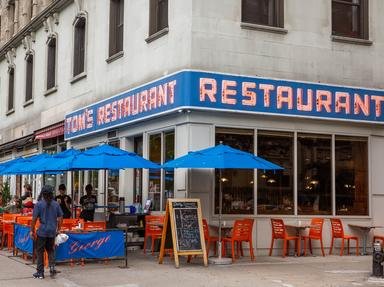Quiz Answer Key and Fun Facts
1. "Seinfeld" (1989-1998) was purported to be a TV show about nothing but that was not the case. In 2014, Jerry Seinfeld in a web interview put the matter to rest by definitively stating what the show was really about, which was?
2. "Seinfeld" never followed the traditional character development of sit-coms. Principal writers Larry David and Jerry Seinfeld had a mantra that grounded every piece of writing with the show. What was it?
3. Most sit-coms involve a plot and a subplot in the their half hour duration. Typically how many plots run concurrently on one Seinfeld show?
4. As well as the four leads, one of the reasons "Seinfeld" was so successful was the strong recurring cast. From the characters below, who was seen in the least number of episodes over the nine seasons of the show?
5. Even the guest actors were extremely well-cast. Many had whole episodes built around them. Which one of the four options got the last word (literally) with the retort "They're real and they're spectacular."
6. Some of the best characters were unseen. All of the following characters were never seen on the show but which one had rabies, shock treatment and worked in a condom factory?
7. The influence of "Seinfeld" was so great, some of its language entered popular culture. Which phrase below did not originate in a "Seinfeld" script?
8. "Seinfeld" used commercial brand names as plot points. It is difficult to say Junior Mints, Drake's Coffee Cake, Pez, and Snickers in a "Seinfeld" episode without smiling. What brand of sneakers did Jerry like wearing?
9. Food is a major source of humour in "Seinfeld". Which food product involves use of a fishing rod to sneak the product into an apartment?
10. The season nine finale of "Seinfeld" polarised audiences. What was the irony revealed in this episode?
Source: Author
1nn1
This quiz was reviewed by FunTrivia editor
ladymacb29 before going online.
Any errors found in FunTrivia content are routinely corrected through our feedback system.
